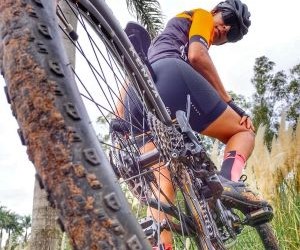Learn how to deal with punctures on long rides with prevention tips, repair techniques, and smart gear choices to keep rolling without stress.
WHAT ARE THE BEST ENERGY GELS FOR LONG RIDES?
Energy gels are a staple for endurance cyclists, providing quick-access carbohydrates that fuel long rides and races. But not all gels are created equal—differences in ingredients, texture, and absorption can make or break performance. Beginners often struggle with choosing the right gels and timing their intake effectively. This article explores the key factors that define the best energy gels, explains how to use them strategically, and helps riders match products to their training and racing needs.

Understanding energy gels
Energy gels are concentrated carbohydrate sources designed to provide fast-acting fuel during endurance exercise. They are lightweight, portable, and engineered for rapid digestion, making them an essential tool for long rides when glycogen stores run low.
How energy gels work
During prolonged cycling, glycogen depletion leads to fatigue, often called “bonking.” Energy gels deliver glucose, maltodextrin, or fructose that the body can absorb quickly, replenishing blood sugar and extending performance. Some gels also include electrolytes or caffeine for added benefits.
Key ingredients to evaluate
The best gels balance quick energy with digestive comfort. Cyclists should check for:
Carbohydrate sources (glucose, maltodextrin, fructose)
Electrolytes for hydration balance
Caffeine for focus and alertness
Amino acids for reduced muscle fatigue
Digestibility and tolerance
Not every gel sits well with every rider. Some athletes experience stomach distress from high-fructose gels or thick textures. Testing different brands during training ensures you find options your body tolerates before race day.
Understanding the science and ingredients behind gels lays the foundation for choosing the right product for your long rides.
Comparing different gel options
Cyclists today have dozens of gel options, each with unique formulas and performance benefits. Comparing them helps identify which gels align with your goals, digestion, and ride demands.
Standard carbohydrate gels
These gels rely on maltodextrin and glucose for rapid absorption. They provide steady energy for 30–45 minutes per packet. They are the most common choice for long rides where frequent fueling is required.
Dual-source carbohydrate gels
Some gels combine glucose and fructose to increase carbohydrate absorption rates. This allows riders to consume more grams of carbs per hour without gastrointestinal issues, making them ideal for high-intensity endurance events.
Caffeinated gels
Caffeine boosts alertness and reduces perceived effort. Caffeinated gels are best used strategically—before climbs or during the latter part of long rides. Riders sensitive to caffeine should test tolerance in training before relying on them.
Electrolyte-enriched gels
Sweat loss on long rides can lead to cramps and dehydration. Gels with added sodium, potassium, or magnesium help maintain electrolyte balance, particularly in hot climates.
Standard gels: reliable, fast-acting carbs
Dual-source gels: higher absorption, less gut stress
Caffeinated gels: mental and physical boost
Electrolyte gels: hydration support on hot rides
By comparing options, cyclists can mix and match gels to cover both energy and hydration needs across different ride scenarios.
Using gels effectively on long rides
Choosing the right gel is only half the equation—using them strategically ensures maximum benefit. Timing, dosage, and combining gels with other nutrition all matter during endurance rides.
Timing and frequency
Most riders should consume a gel every 30–45 minutes after the first hour of riding. Starting early prevents energy crashes, as it’s harder to recover glycogen once depleted. Setting reminders on cycling computers can help maintain consistency.
Combining with hydration
Energy gels should always be consumed with water to aid digestion and absorption. Washing down gels with electrolyte drinks can sometimes cause stomach issues, so plain water is ideal.
Personal experimentation
Every cyclist’s digestive system is different. Testing gels in training rides helps identify which flavors, textures, and formulations work best. Mixing gel types—such as alternating between caffeinated and standard—keeps fueling varied and effective.
Consume 1 gel every 30–45 minutes
Always take gels with water
Experiment in training, not race day
Mix caffeine and non-caffeine gels strategically
Final advice
Energy gels are most effective when treated as part of an overall fueling strategy. Combined with hydration and pacing, they sustain energy, delay fatigue, and help riders finish strong on long rides.
YOU MAY ALSO BE INTERESTED






